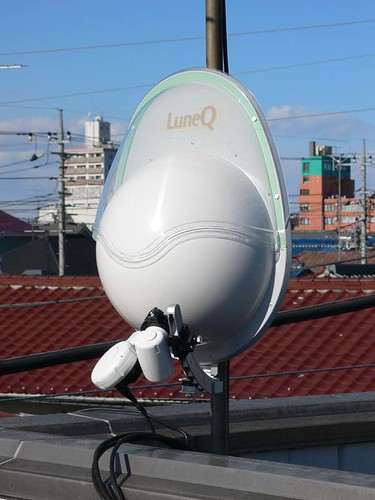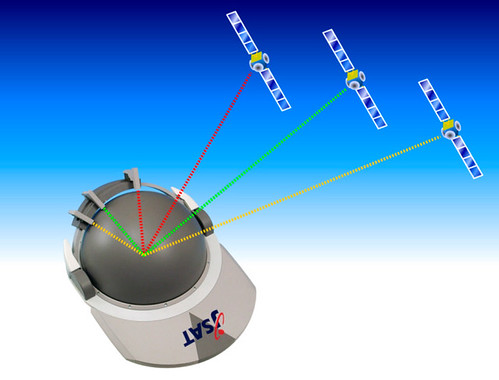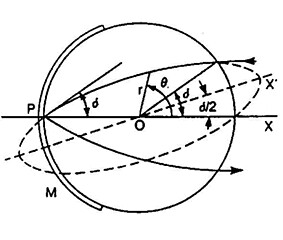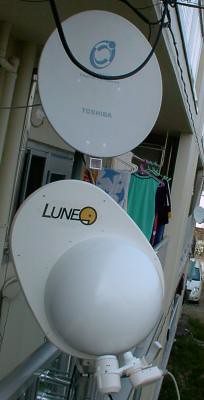What Dish? That Antenna Looks Like a Turkey

There’s a revolutionary satellite antenna being sold in Japan, based on the Luneberg Lens, capable of receiving signals from multiple satcoms. JSAT’s press release in 2001 announced this breakthrough, and a joint release with Sumitomo Electric introduced it to the marketplace in 2003. This photo journal demonstrates assembly, which looks simple enough.

But was it really a “breakthrough?” I think it was – at least from a marketing perspective. R. K. Luneberg proposed the principle of this lens for electromagnetic waves in 1944, where a sphere made of materials with relative dielectric constants varying in square distribution from 1 at the surface to 2 at the center becomes a dielectric lens with countless foci on its surface. A dielectric constant is a measurement of a material’s capacity to modify electromagnetic waves. This suggests a single lens antenna is capable of receiving and transmitting waves to and from multiple directions simultaneously – without moving the sphere. Brilliant!

What we have here is a high-gain, low-cost antenna that may have substantial market potential in the U.S and Europe, too. Presently, antennae based on the Luneberg Lens have been used in mobile military applications, especially on aircraft where a low profile is required. Datron makes and sells a Luneberg Lens Array (LLA). Lun’tech of France is selling one today, and Raven in the U.K. has been talking about one for some time.
Pretty cool how this 60-year-old technology may have an impact in today’s most advanced satellite communications systems. Want to learn more? This comprehensive overview from Stevens Tech in Hoboken is very useful. And if you want to start selling them, the folks at Rozendal Associates can help you make them.


[…] ago, we marveled at the sophisticated simplicity of the Luneberg Lens and how cool it was to use technology developed 70 years ago to receive from multiple satellite TV […]